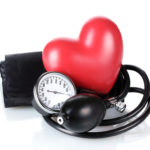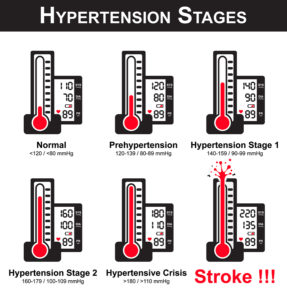 While my mind thinks I’m still 19, my arteries are not fooled and the blood pressure reading at my last check-up was inching above my usual 110 over 65. In fact, it was almost to the pre-hypertension stage, and it really threw me for a loop.
While my mind thinks I’m still 19, my arteries are not fooled and the blood pressure reading at my last check-up was inching above my usual 110 over 65. In fact, it was almost to the pre-hypertension stage, and it really threw me for a loop.
High blood pressure is the #1 risk factor for death and disability, and worrying about it made mine go even higher. So I gave myself 12 weeks to get it back to normal. It turns out I didn’t need anywhere near that long.
Here’s how I did it.
1. I added more ground flax (also called flax meal) to my foods every day.
Ground flax, just a few tablespoons a day, lowered blood pressure by about 15 points in a recent double-blind, placebo-controlled study. That’s more than most blood pressure medications, and they can have some unpleasant side effects. The only side effect of eating ground flax is a nutty flavor. Start with one tablespoon a day and work your way up to 3-4 tablespoons a day to get the most benefit.
The best way to get more ground flax into your diet is to add it to foods like oatmeal, yogurt, hummus, and other smooth, creamy foods. You can also sprinkle it on thing like avocado toast or a peanut butter sandwich. Add some (about 1/4 cup) when making quick breads or muffins for an added boost.
Flax makes a great egg substitute when baking. Mix one tablespoon of ground flax with three tablespoons of water for each egg called for by the recipe. Let sit for a few minutes and you’re ready to go. This works best in breads or muffins, rather than delicate cookies.
We don’t know what exactly in the flax makes it work so well. It may be the fiber that our bodies love, the healthy fats, or the antioxidants. Flax will not only help lower your blood pressure, it will make the good bacteria in your gut very, very happy.
2. Hibiscus tea can also help lower blood pressure, by about 7 points. Two strong cups a day is all it takes. Its a little tart and I find it energizing even though there is no caffeine. A great one is Republic of Tea Hibiscus Blueberry flavor tea – delicious and not too sweet.
3. I asked for a Fitbit for my birthday and worked on getting my 10,000 steps a day, or at least 30 minutes of exercise. That’s the hardest thing for me, since my work keeps me sitting down most of the day.
4. Lastly, we eat a mainly plant-based diet at home. The more fruits, vegetables, nuts and whole grains we eat the lower our blood pressure. The more meat and fatty dairy we eat, the higher those numbers go. Vegetarians have about half the rates of high blood pressure as do meat-eaters.
Your doctor may suggest losing weight as the best strategy for lowering blood pressure, and a lower body weight can certainly help. Yet each of the strategies above can lower your blood pressure before you’ve even lost a pound.
So often clients will try to lose weight by eating small meals full of “protein” like lunch meat, cheese, or a protein bar. The weight doesn’t budge, and neither does the blood pressure. Our bodies need the nutrients found in plant foods. It doesn’t seem intuitive, but almost always when they start eating more plants, and actually eating more food, they lose weight quickly and easily while lowering their blood pressure and cholesterol.
I’d love to help you bring your blood pressure down naturally. These strategies can usually be mastered in as little as three sessions.

Leave a Reply